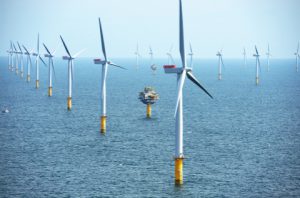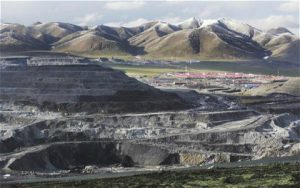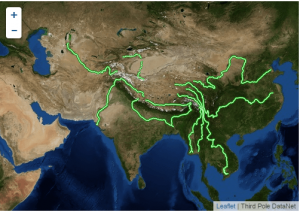Tom Levitt (TL): Is any deal better than no deal at the UN climate summit in Paris next year?
Kevin Anderson (KA): No, I don’t think it is. If no worthwhile deal appears to be forthcoming from Paris then first we have to be open and honest about that, and put in an emergency timetable to bring leaders together again to hammer out a deal. What will happen with a weak deal is targets or frameworks far removed from those necessary to meet the 2C commitments – first agreed by leaders at the Copenhagen Summit in 2009 – will be used to inform the basis of national policies. In practice we’d then likely only achieve a proportion of those and thereby lock in a slightly modified business as usual future heading for temperature rises of 4C or more.
TL: How do you see the European Union’s leadership role on climate change?
KA: The EU has not developed internal policies that are in any way consistent with its repeated and expressed goals of avoiding the 2C characterisation of dangerous climate change. The EU is now aiming for what it says is an ambitious target of a 40% reduction in emissions by 2030. That’s far too weak. We need to achieve more than double that for the EU to be making its reasonably fair contribution to a 2C future as outlined by the IPCC. The science and the numbers that come out of the IPCC report in terms of the carbon budget – taking into account a reasonable element of equity – would mean nations and regions like the US, EU and Australia would need to reduce their emissions at a much faster rate than even the EU is considering.
TL: The UK has been seen as a leader on climate change since the passing of the Climate Change Act in 2008. But is it now in danger of ditching or failing to meet its commitments?
KA: To its credit the UK does have carbon budgets, but, unlike the 80% target for 2050 outlined in the Climate Change Act, they are not enshrined in law. The long-term, 2050 targets are irrelevant and worse still misleading in relation to climate change. The only thing that matters is the build-up of greenhouse gases, particularly CO2, in the atmosphere, in other words carbon budgets. The problem with the UK’s 2050 80% target is that it allows us to think that we can do things tomorrow that we failed to do today. If no agreement is reached in Paris next year, there may be increasing pressure on the government to repeal the Act itself. And even if the Act remains, I think the influence of the Committee on Climate Change may be reduced, and there is a risk that it could be abolished.
TL: If we were to have a realistic chance of meeting the 2C target, what expectation would that put on China?
KA: If we look at the IPCC’s carbon budgets for a reasonable chance of staying within a 2C framing of climate change, then the message is fairly stark for Annex 1 countries, i.e. the US, Europe, etc. They have to eliminate fossil fuel use from their energy system early in the 2030s. For non-Annex 1 countries, including and dominated by China, they would need to eliminate all fossil fuels from their energy system by 2050, but also they need to peak their emissions by the mid 2020s and, by 2030, be delivering decarbonisation rates of at least 10% reductions year on year. Together these give a good chance of staying below a 2C rise in temperature.
TL: How far can the policies promoted by The New Climate Economy report and others like them take us in reducing GHG emissions and tackling climate change?
KA: The first thing to bear in mind is that these reports are primarily about greening growth. They are not about climate stabilisation. That’s an important distinction. They are genuinely interested in how we can green the process of economic development, but they are not thinking about what the science says about carbon budgets and keeping to the 2C target. That’s a real danger because there is an assumption that if we green growth that’s adequate. But if the temperature keeps rising then the implications of a rapidly changed climate will, overall, play out negatively in terms of economic development.
These reports are authored by well meaning people trying to figure out how far you can push the current socio-economic and political systems to address climate change. The fact is that the speed and depth of mitigation now required for 2C begs fundamental questions of the current systems. Perhaps these systems could have addressed climate change if they’d responded appropriately at the time of the first IPCC report almost a quarter of a century ago. But in 2014 our emissions are 60-65% higher than they were in 1990 and are showing no signs of coming down in the next few years.
TL: Do you still have faith in the UN process or is it time to pursue alternatives like bilateral deals?
KA: I am all for continuing with the UNFCCC (United Nations Framework Convention on Climate Change) and related processes, I think we need to be pushing them as hard as we can. But there are other things we should do alongside them. The UK’s Climate Change Act was a separate process, outside of the UNFCCC, as were the EU negotiations. We already have a mix of approaches. It’s a mistake to think that these can’t be designed to complement the UN negotiations. Ultimately however, if you are serious about climate change as a global problem then a global framework is necessary to understand the collective implications of everyone’s efforts. It is foolish and naïve to decry the UN process assuming you could substitute it for smaller, bilateral or other negotiations – these are necessary, but only as a complement to the UN process.
TL: Why do you think that message about 2C isn’t getting through to policymakers?
KA: Those of us in the scientific community who have been developing emissions scenarios and pathways have not served the policy-makers or civil society well. We have collectively adopted the approach of the New Climate Economy authors in trying to second-guess how hard we can push the political and economic system. It is our job as academics to stand outside of such constraints and say if the international community wants to meet it targets of 2C then these are the necessary carbon budgets and these are the range of accompanying emissions pathways. We should stand our ground as independent, objective analysts, much more than we have.







